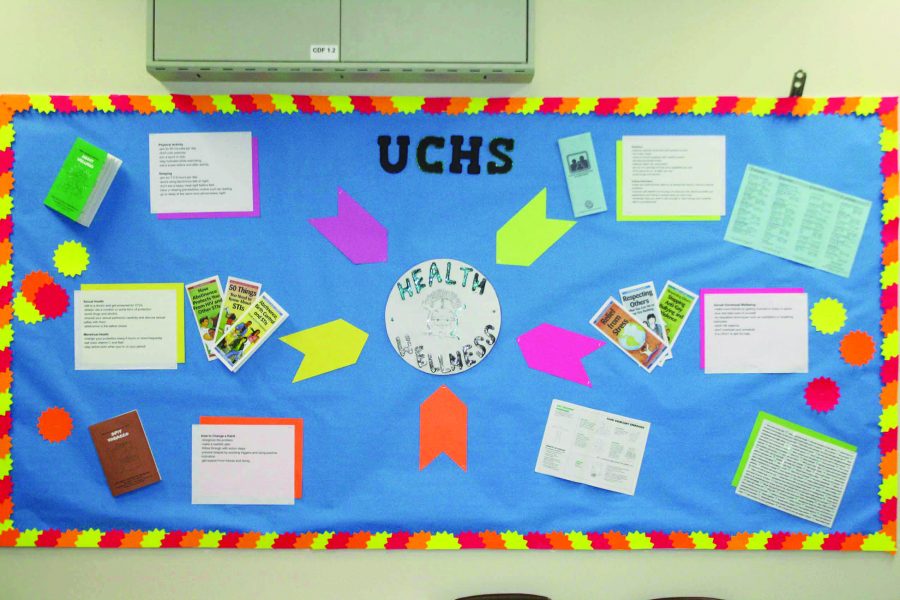San Diego Unified Does Not Provide Contraceptives to Students
January 27, 2017
San Diego Unified School District schools cannot directly provide any contraceptives, including condoms, to students, but may only provide advice to guide students to the appropriate facilities, according to School Nurse Tiffany Jarrel, due to San Diego Unified District regulations.
“If you’re going to be making adult decisions like having sex, then you’re going to need to take on the responsibility of safe sex as well,” said Jarrel. She further added that if a student needed to be absent from school in order to make an appointment at a clinic, “…we cannot excuse the absence for the student, but if a parent called, we would not disclose any information about the questions asked by the student. But if a student was having sex with an older man, or being sexually abused, it is mandatory for us to report it to Child Protective Services as school faculty,” she continued.
Junior Laural Kenyon stated that she believes contraceptives should be provided at schools. “In order for kids to have the ability to trust that they have somewhere to go if they have no other option but might need it for comfort and security; Contraceptives like Plan B and condoms should be provided by schools,” Kenyon exclaimed.
While a student can only be provided information and guidance at school, Local Pediatrician Andrea Herman explained that there are federally reserved funds at hospitals and doctor’s offices for teens who are struggling, and need to get contraceptives independent of insurance. “I usually advise my patients to go to wherever they feel most comfortable. The federal funds are called ‘Title X’ funds and cover these services independent of insurance,” Herman explained. “Birth control ranges from 45 dollars for generic brands to up to 90 dollars for name brands,” she added.
“California law allows minors 12 and older to seek care for STD treatment. I believe there is no age limit for birth control. But there are mandatory reporting laws if a minor reveals that he or she is having sex (It’s pretty complex depending on the age of the teen and the age difference between the teens). I tell my patients at the beginning what I have to report. It’s up to them what to ask for and tell me,” said Herman.
“Teenagers can seek care in a school-based health center, Planned Parenthood, or even come see me without their parent for these confidential services,” said Herman. Planned Parenthood is a nonprofit health organization that provides reproductive services to anyone in need. “These health centers provide a wide range of safe, reliable health care — and the majority is preventative, primary care, which helps prevent unintended pregnancies through contraception, reduce the spread of sexually transmitted infections through testing and treatment, and screen for cervical and other cancers,” according to Planned Parenthood’s official website (plannedparenthood.org).
“Planned Parenthood is America’s most trusted provider of reproductive health care. Our affiliates provide educational programs and outreach to 1.5 million young people and adults every year, and one in five American women has chosen Planned Parenthood for health care at least once in her life,” according to their official website (plannedparenthoodorg).
Although Planned Parenthood is available for health care as of the publication of this issue of The Commander, Speaker of the House Paul Ryan announced that Planned Parenthood would be defunded in Donald Trump’s presidency, according to CNN (cnn.com). According to Herman, the defunding of the major resource Planned Parenthood will, without a doubt, significantly affect teen pregnancy.
In 2005, California’s teen abortion rate ranked sixth in the United States, with a rate of 26 abortions per 1,000 young women ages 15–19 compared to the national rate of 19 abortions per 1,000 according to the U.S. Council of Sexual Education and Information (siecus.org).
“California does not require schools to teach sexuality education, though they are required to teach HIV/AIDS education to students at least once in middle school and once in high school. If schools do teach additional sexuality education, which they are permitted to do in kindergarten through twelfth grade, they must follow certain guidelines,” according to the United States Council on Sexual Education and Information. “Parents or guardians may remove their children from sexuality education and/or STD/HIV education classes. This is referred to as an ‘opt-out’ policy” (siecus.org).
According to the San Diego Unified School District website, sexual education is an “opt-out program” in the district. This means that parents have the ability to excuse their children from these programs. The website also stated that these comprehensive classes taught in school are required by the Healthy Young Act in California (sandiegounified.org).
“Scientifically and educationally speaking, our Sex Ed program in school is adequate; however, many people still have no idea about some of the results or consequences of sex. Especially because we only teach the outcomes to be pregnancy or S.T.Ds. As women, we have a much more complex system and need to be educated on more safe sex practices than simply using condoms or staying abstinent,” said Kenyon.


